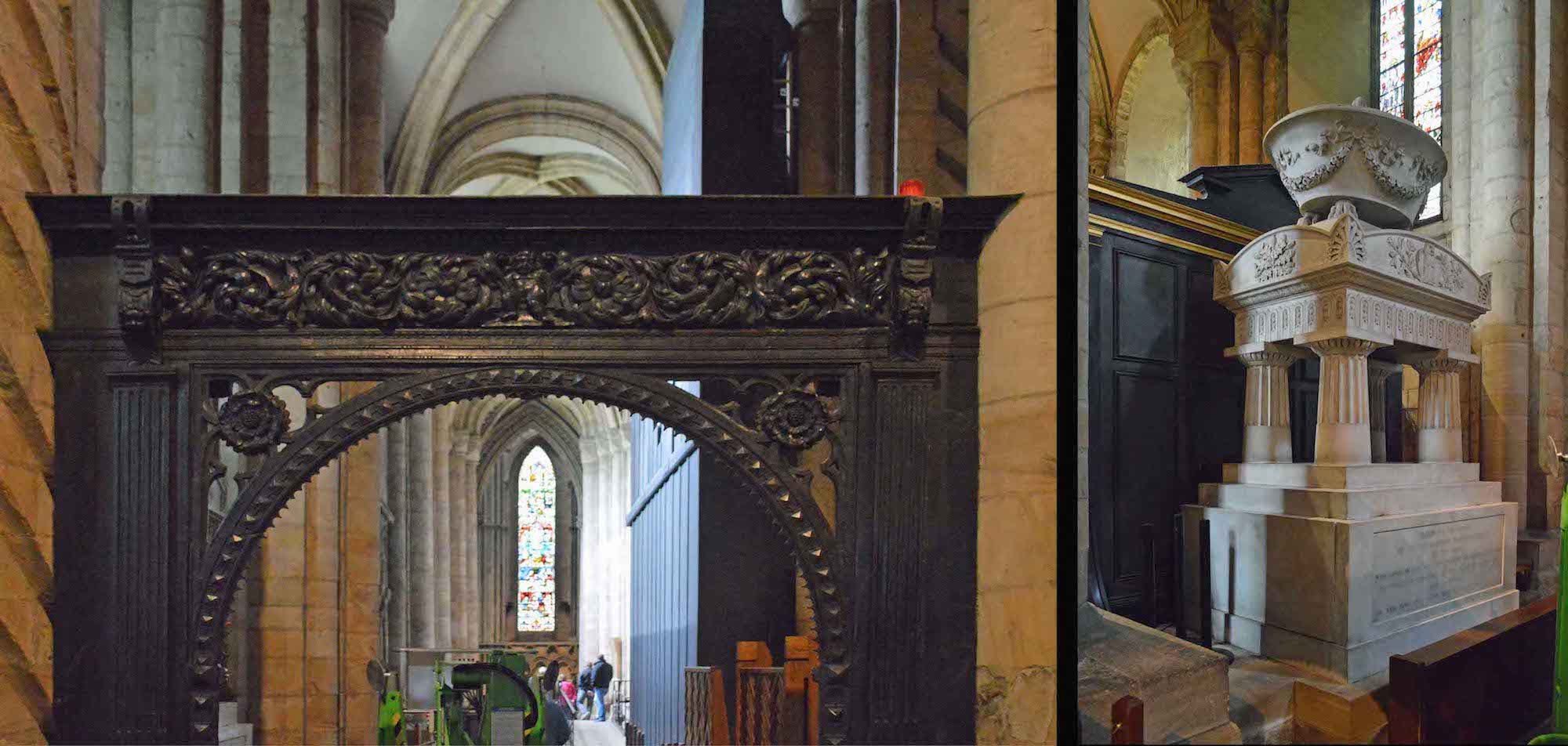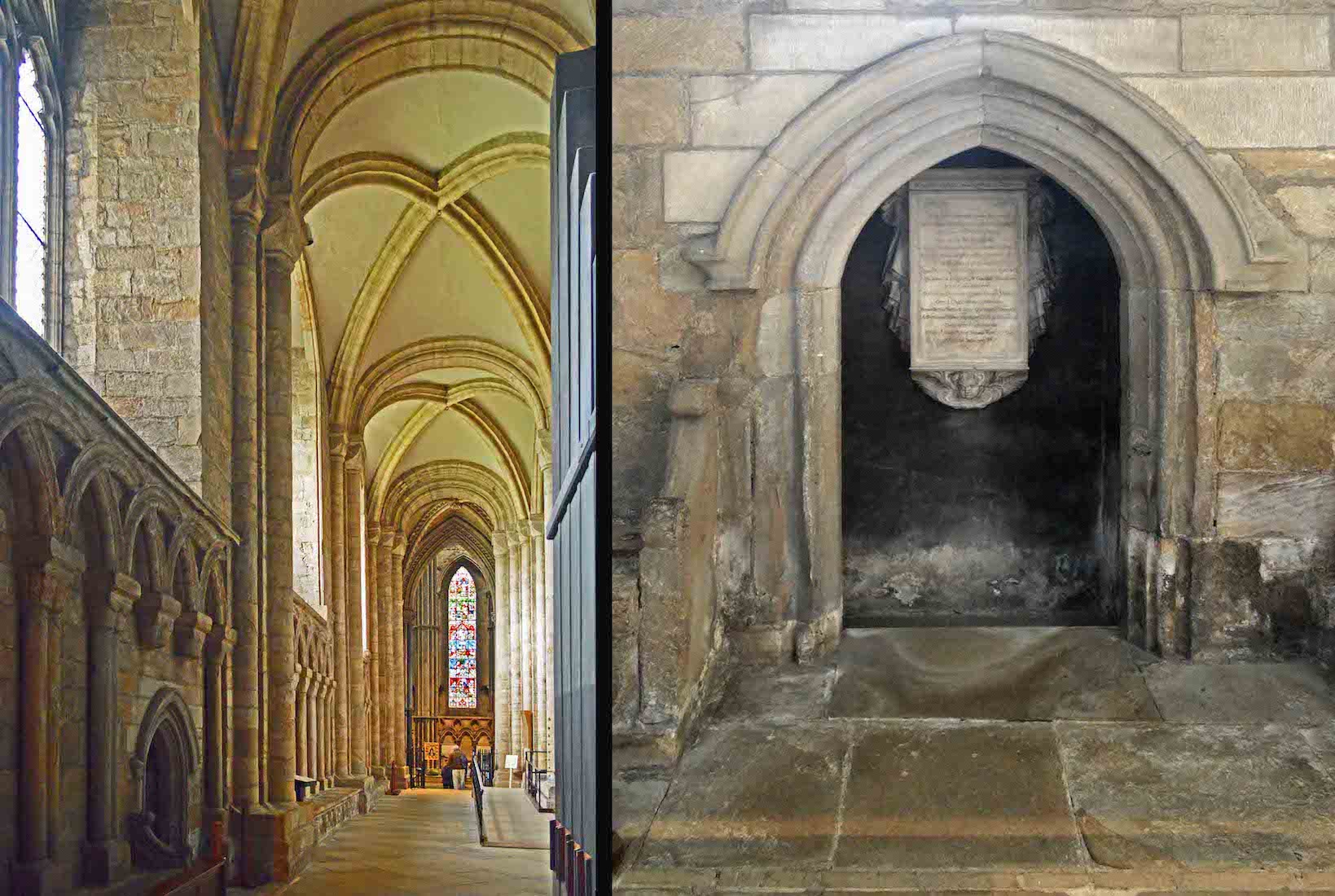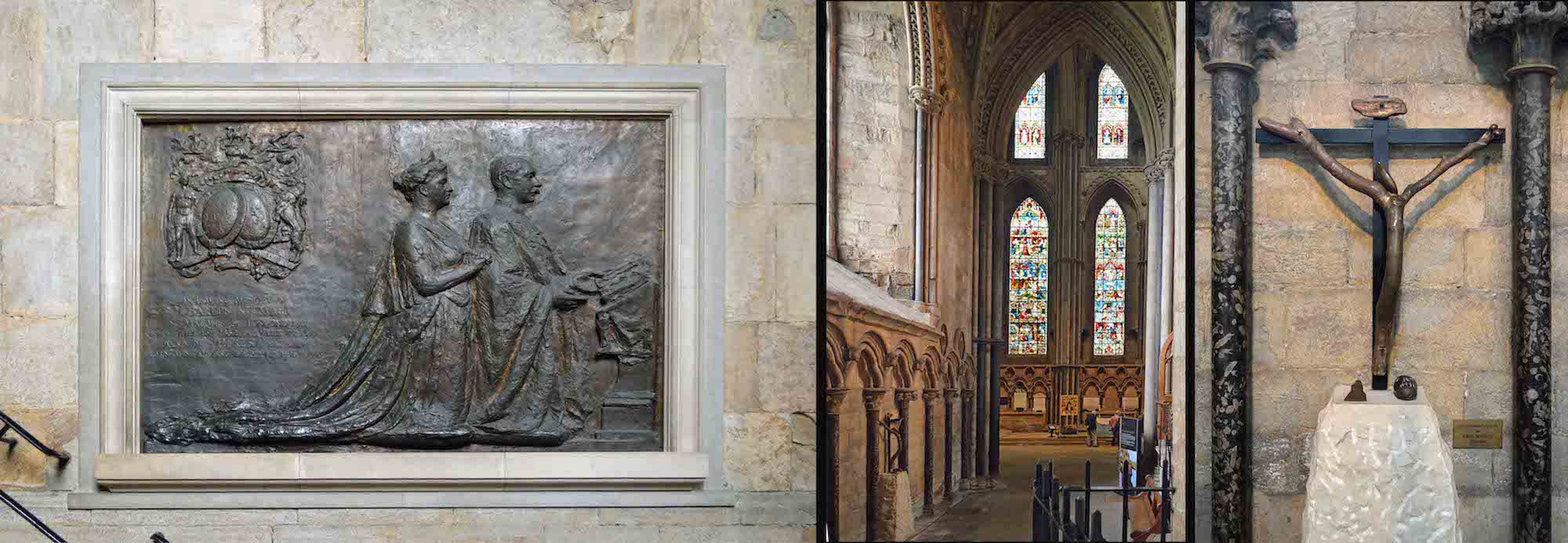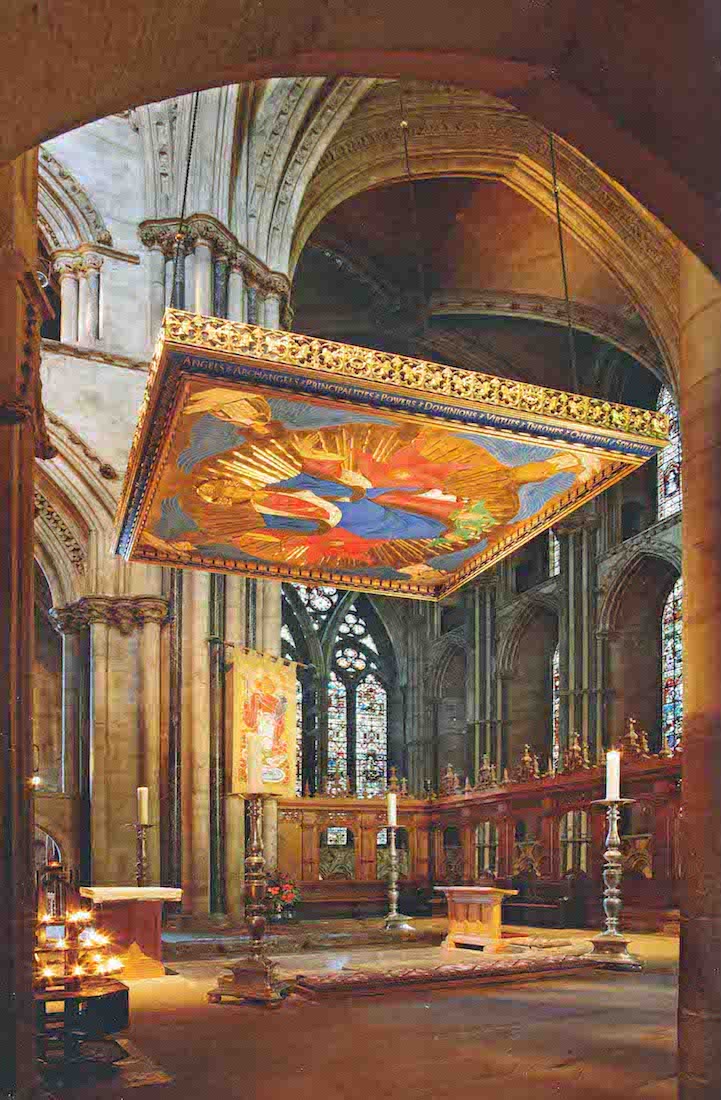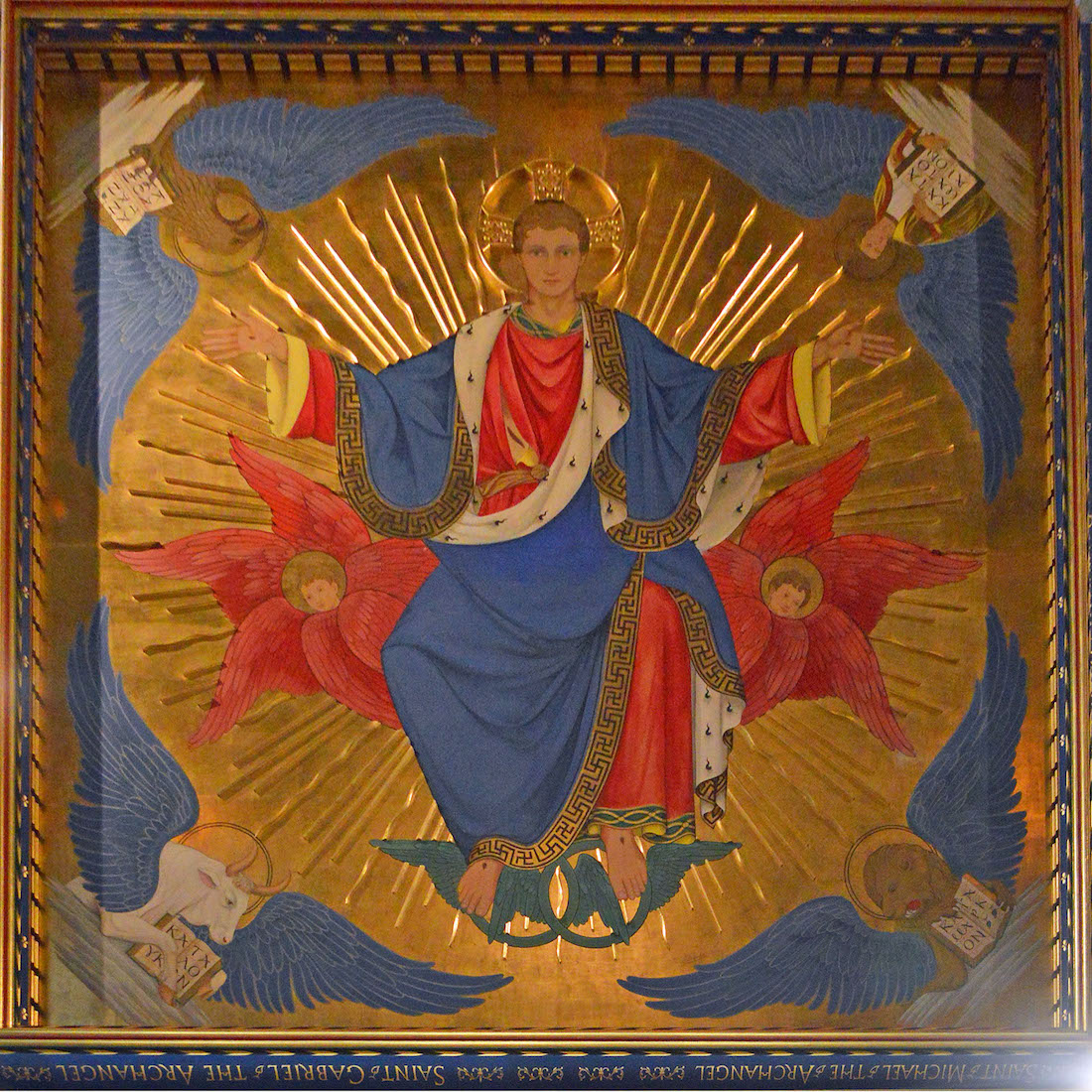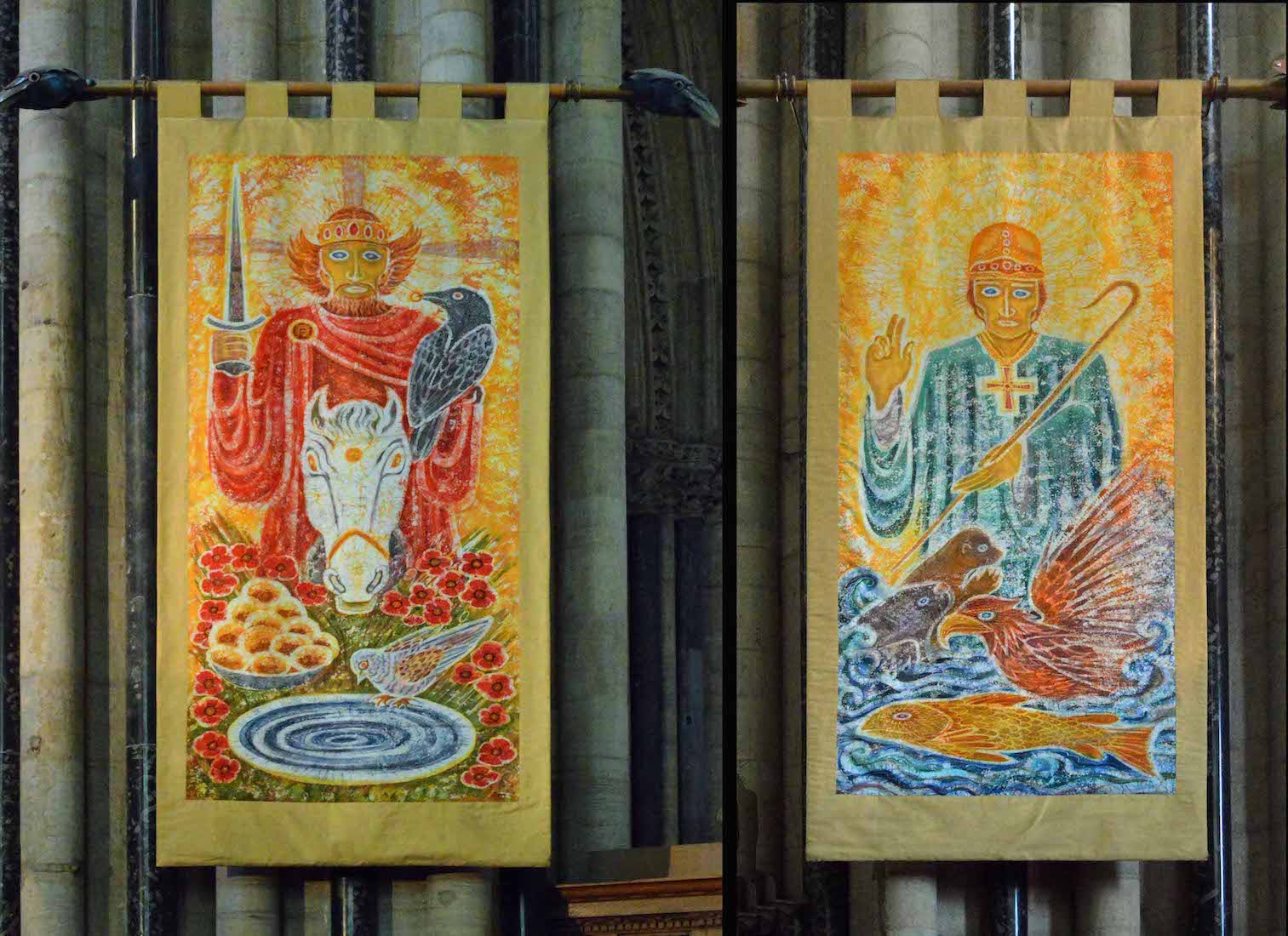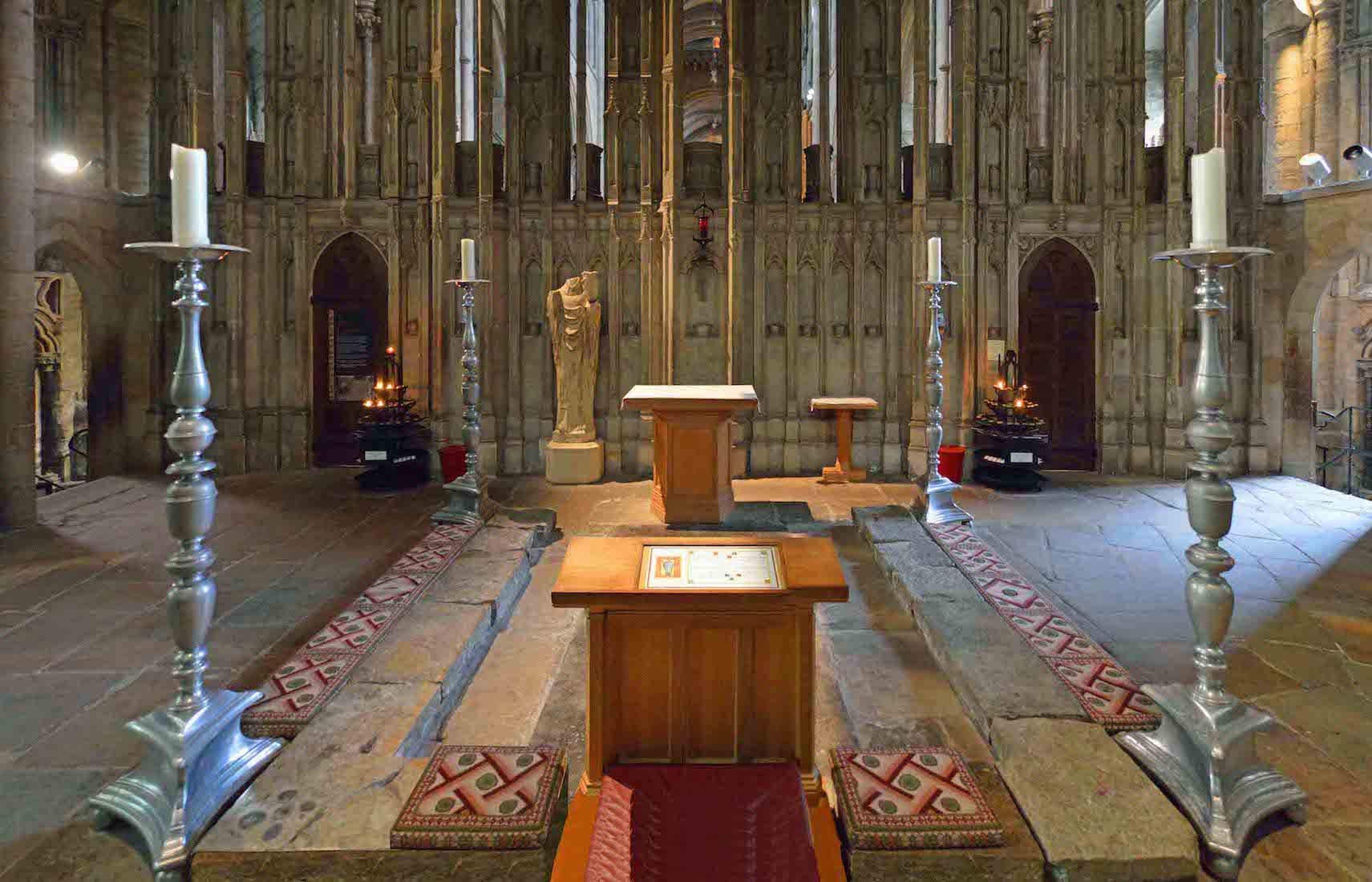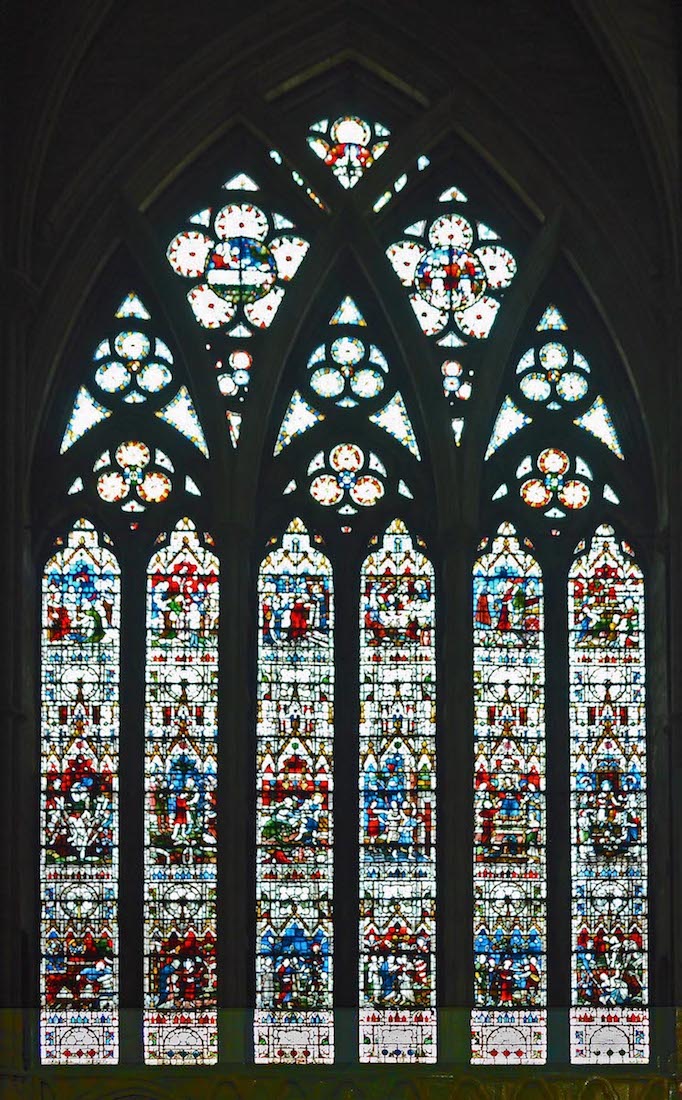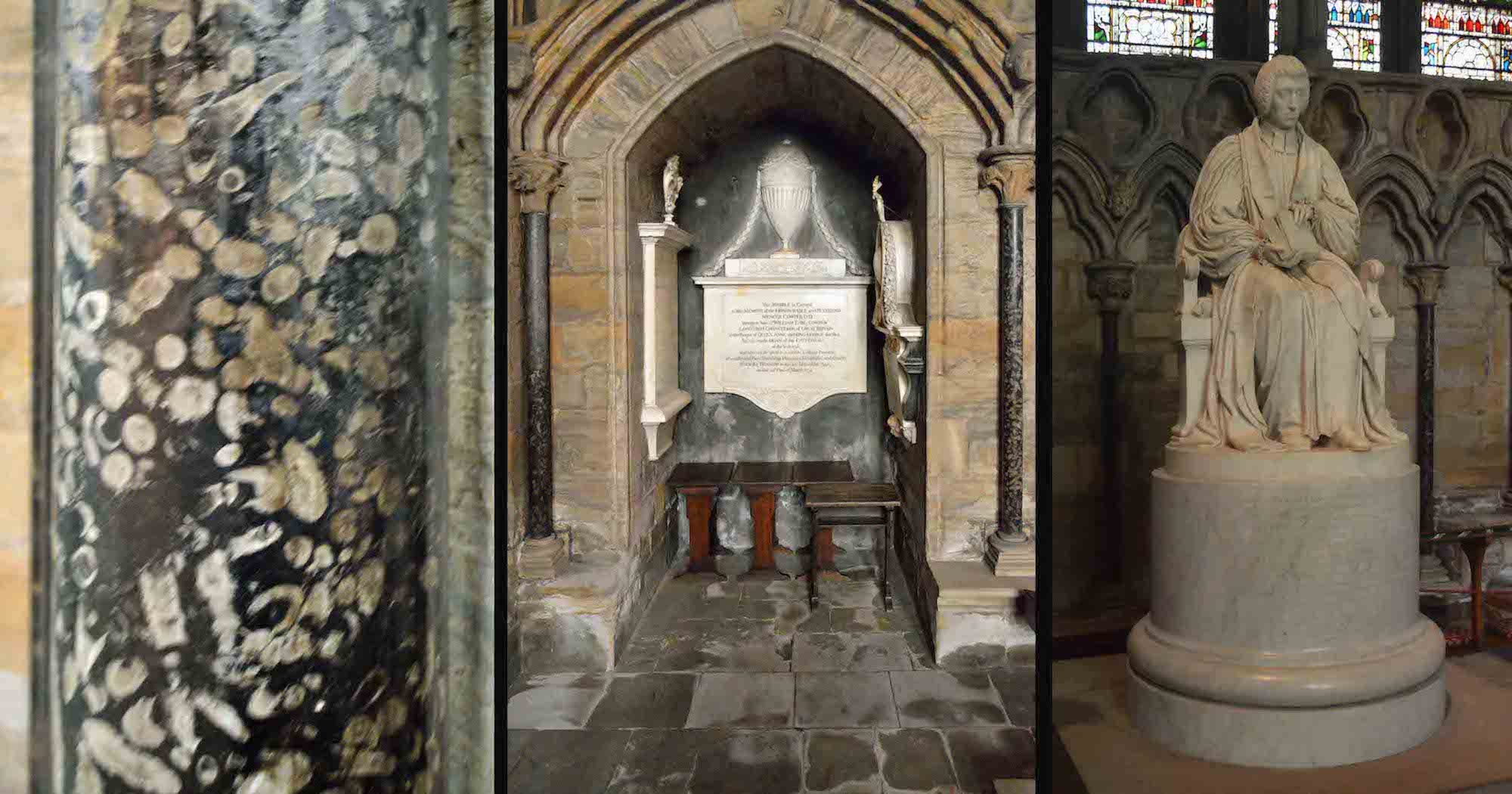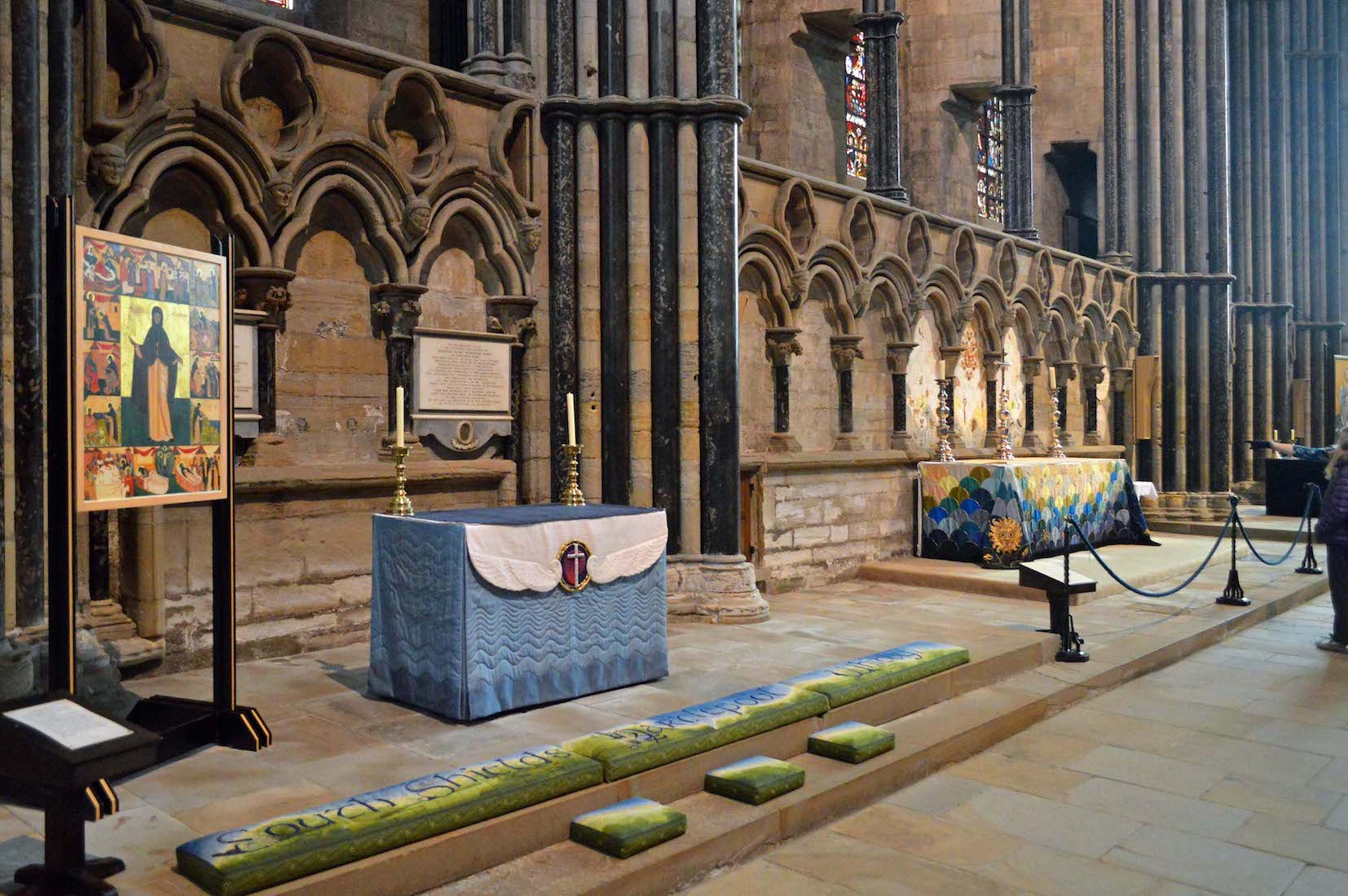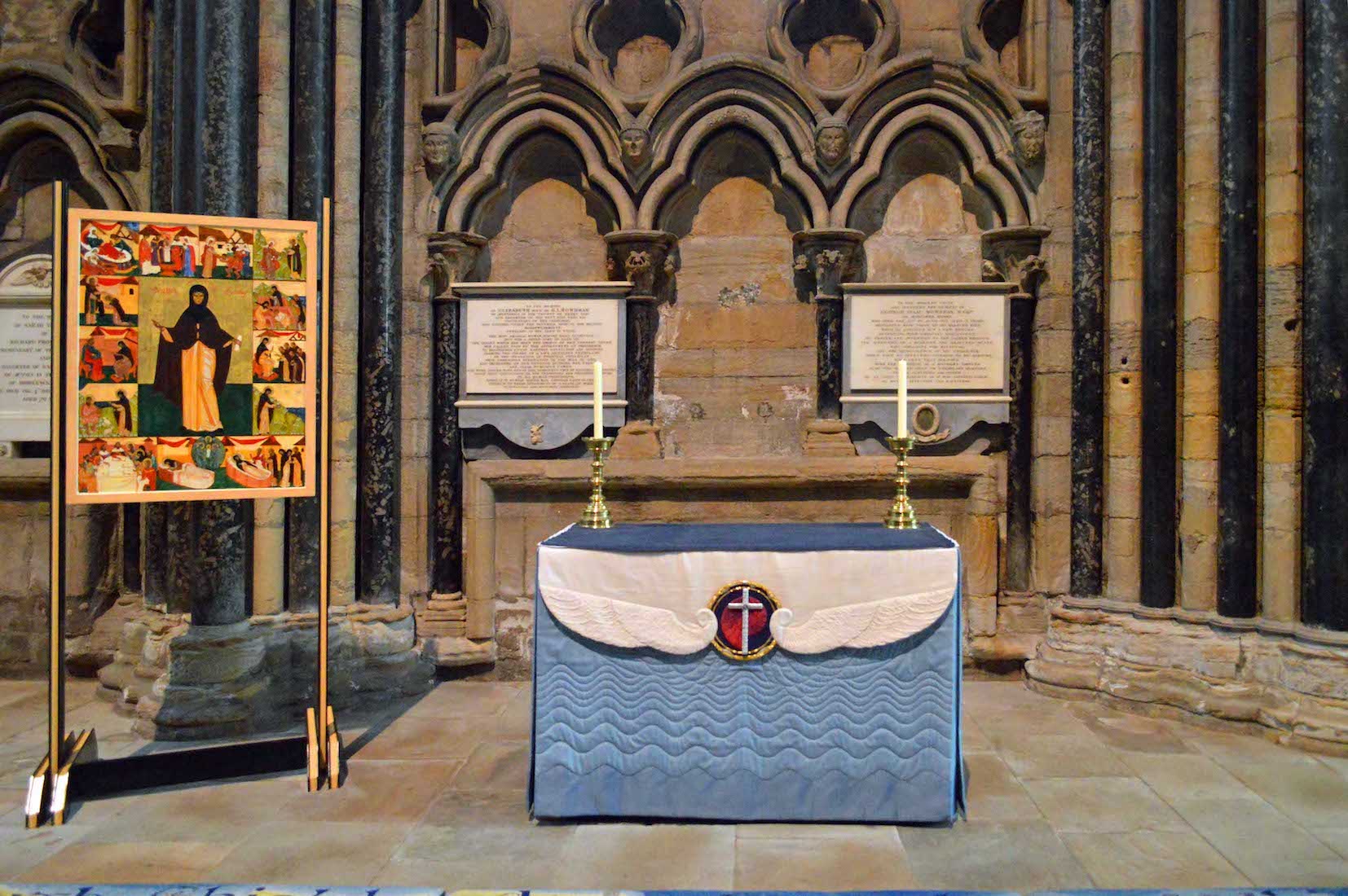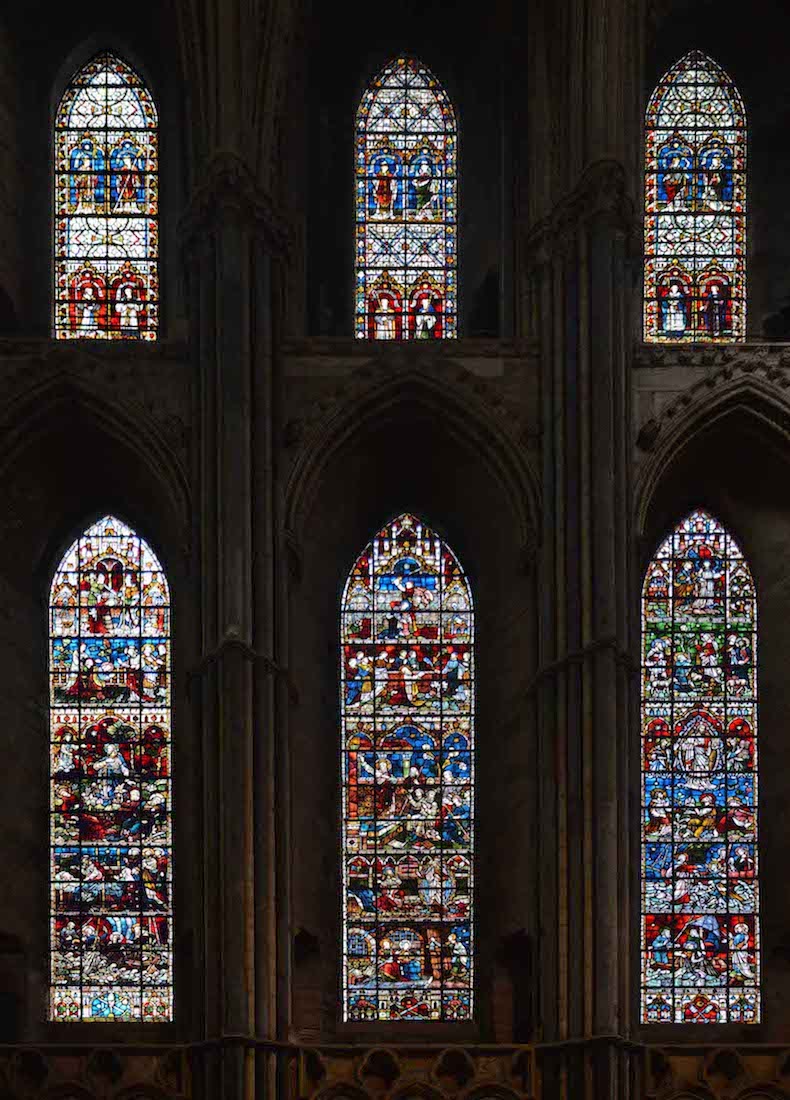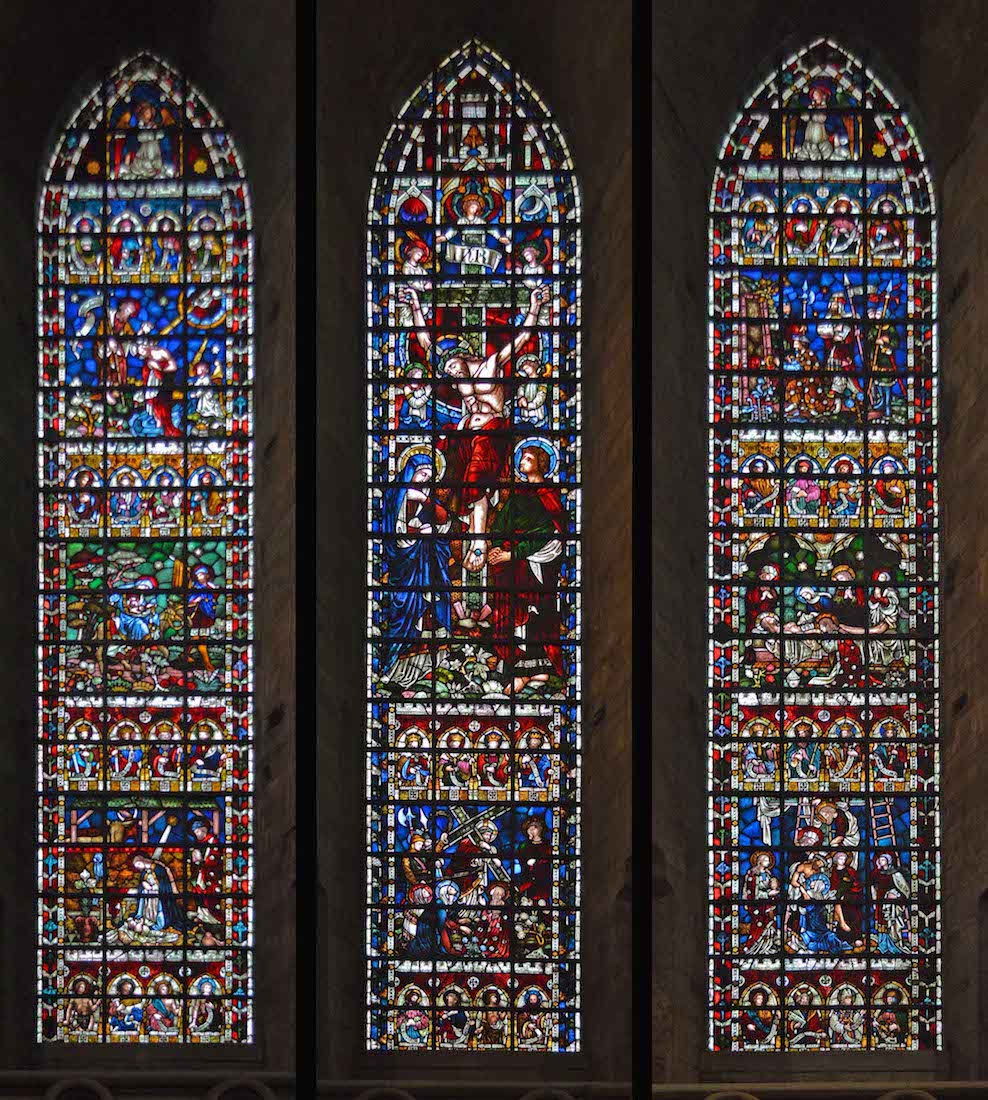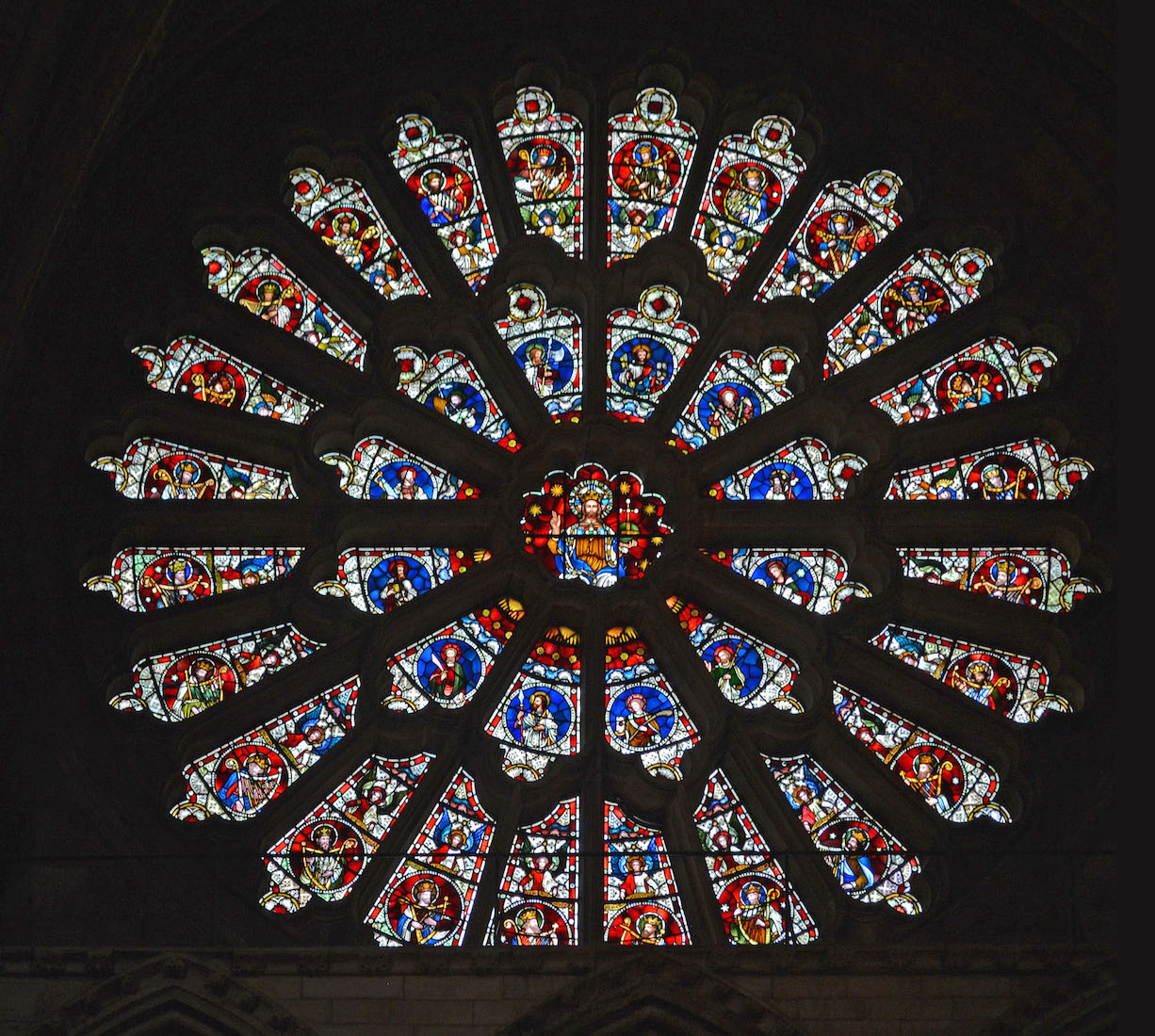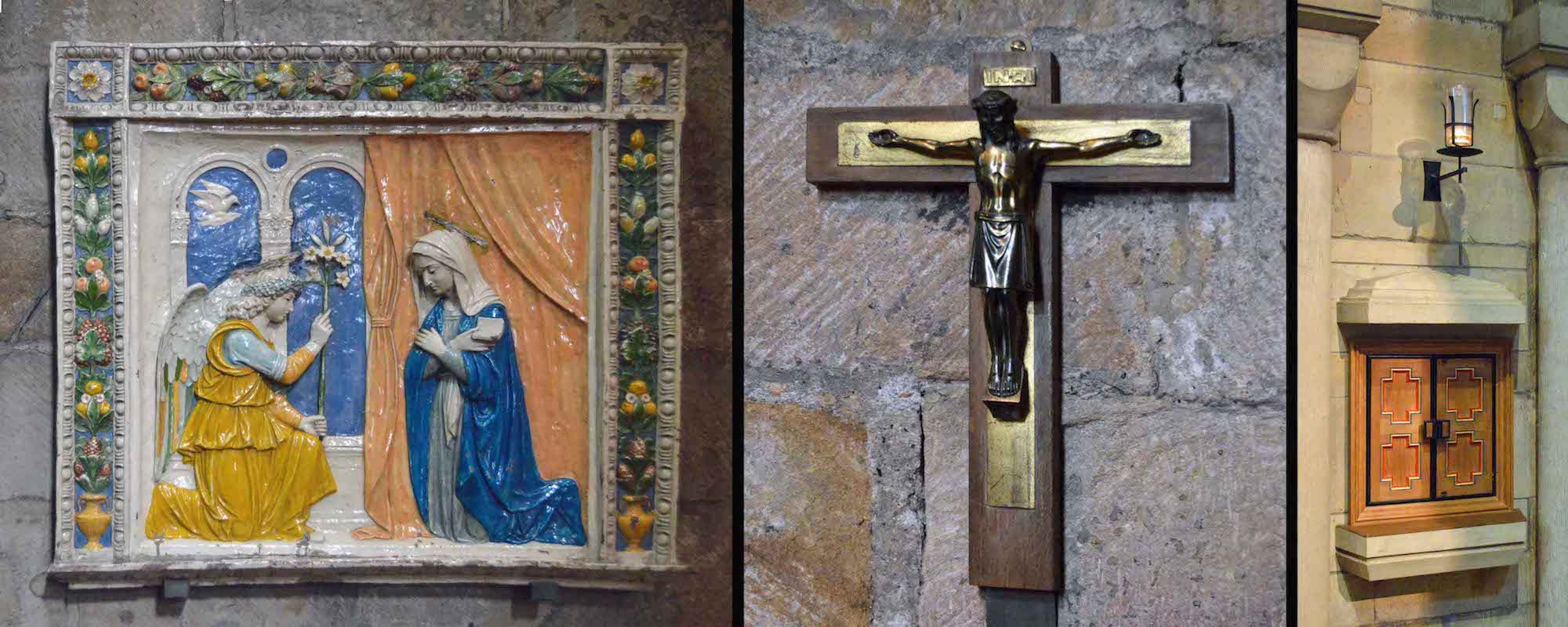
Below the chapel windows are three items of interest. From left to right we have a C 19th glazed terracotta ‘Annunciation’, an interesting crucifix, and a small aumbry. PLAN
42. NORTH ST GREGORY CHAPEL
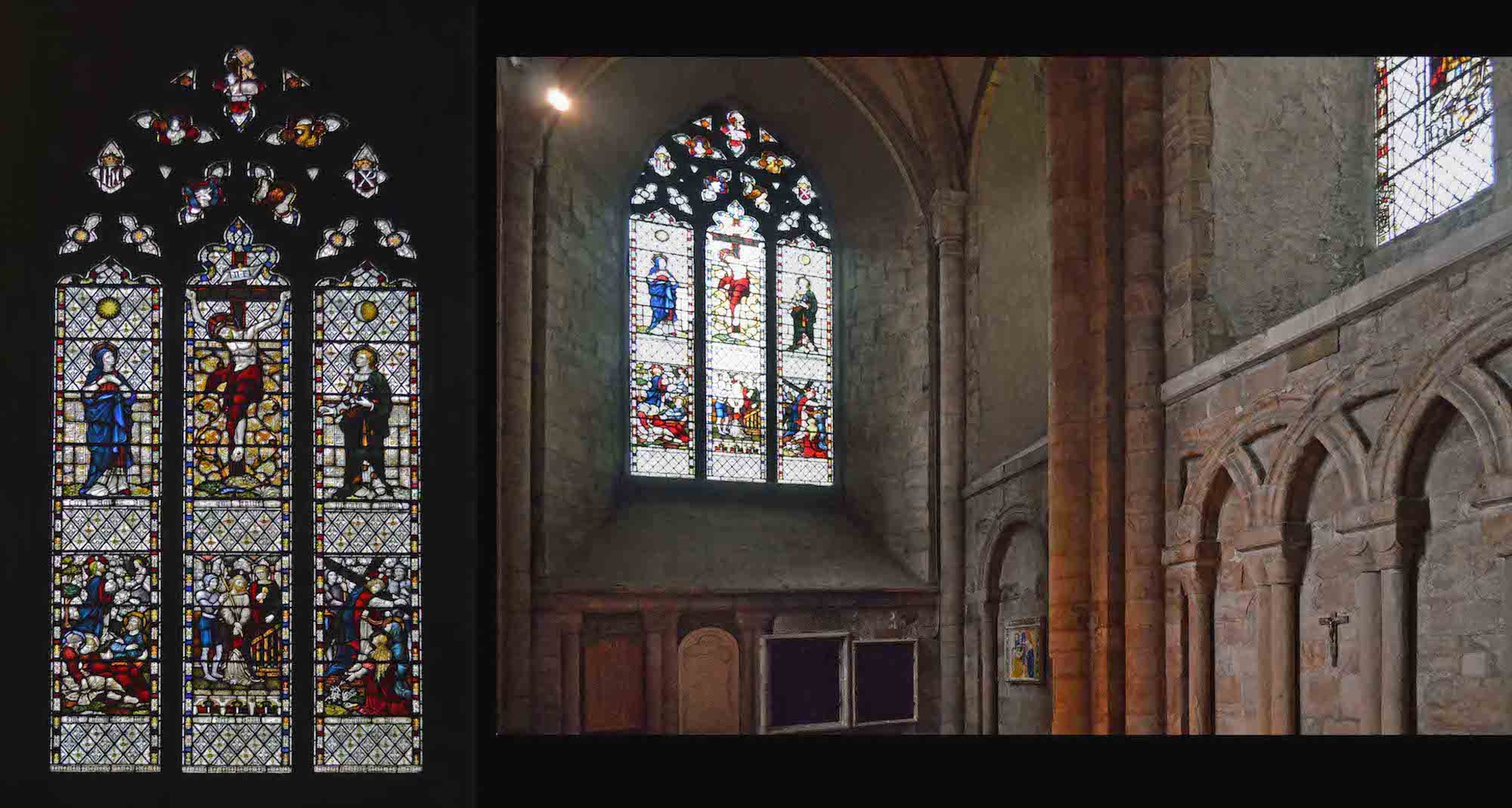
As we prepare to leave the St Gregory Chapel, we turn to the North wall, opposite the altar. Here there is a single three lancet crucifixion window above several tablets. At top is Christ on the Cross flanked by his mother Mary and the disciple John. Below are three scenes: Christ praying in the Garden, the judgement, and Christ carrying his Cross to Calvary.
43. NORTH QUIRE AISLE ENTRY
We leave the chapel, walk through the North transept, and come to the North quire aisle. A decorated arch frames the entrance, probably concealing a reinforcing strut! Just to the left on the other side of the arch is the the monument to Matthew Woodfield who died in 1826. Greek columns support a massive top with a carving of an owl surrounded by oak branches. Above is the sarcophagal urn.
44. NORTH QUIRE AISLE
The North quire aisle is fairly plain – at least on the North side, with plain windows. At the end of the aisle, steps descend some six feet to the Eastern Chapel of Nine Altars. Just before the steps is a small alcove containing a memorial.
45. BISHOP’S TOMB
The South side of the quire aisle is more interesting with a Bishop’s tomb. Some identification of the bishop would be useful ... . At right is the coat of arms of the See of Durham.
46. STEPS DOWN
As we arrive at the East end of the North quire aisle, we descend some steps down to the Chapel of the Nine Altars. On the North side wall is a plaque and a modern crucifix. The plaque is the Stuart monument, in memory of Charles Stuart and his wife Theresa. The crucifix is called Lam’a Sabach’thani – the words of Jesus recorded in Matthew 27:46 – ‘Why have you forsaken me?’ It is the creation of Kirill Sokolov (1930 –2004).
47. SHRINE OF ST CUTHBERT
The Chapel of the Nine Altars, a 13th century Gothic replacement of the original Norman apse, contains the Shrine of Saint Cuthbert (died 687). Cuthbert's reputation as a saint quickly grew when his body was found to be in the same condition ten years after his burial as the day he died. Over the years the whereabouts of his remains were lost, although legend has it the true location is known to a select group of monks (although no one seems to know just who these monks are!).
48. CANOPY OF ST CUTHBERT’S SHRINE
The modern canopy of the shrine of St Cuthbert is one of the few indicators of what the shrine would have looked like before the mid-sixteenth century when it was stripped of all its riches.
49. SHRINE BANNERS
Two banners flank the shrine of St Cuthbert – one to the North and one to the South. The banner to the left is the banner of St Oswald. The banner to the right is the banner of St Cuthbert.
50. SHRINE
The simplicity of St Cuthbert’s shrine today belies its original appearance, which was ornate. It is said that just one of the many jewels decorating the shrine would have been worth a king’s ransom. The base of the shrine was made of expensive green marble and gilded. In the base were four seats, where pilgrims – especially the sick and lame – could kneel to receive the blessings of God and St Cuthbert.
51. CHAPEL OF NINE ALTARS : NORTHERN END
We now stand in the Chapel of Nine Altars and look towards the North. There is a large stained glass window, and below a seated figure looking back at us. To his left is a smaller memorial, and to the right, a banner and one of the (in fact) three altars in this chapel.
52. CHAPEL NORTH WINDOW
The most significant architectural aspect of the Chapel of the Nine Altars is that, true to the Gothic style, it comprises large expanses of glass rather than expanses of stone (unlike Norman architecture). From a distance the North ‘Joseph’ window is impressively large. There are six main lancets with 18 scenes, which seek to tell the whole story of Joseph.
53. COLUMN AND MEMORIALS
A feature of this chapel is the elegant black columns of Frosterley marble. This is not a true marble, but a shiny decorative black stone originating from Weardale. It is embedded with the white shells of prehistoric sea creatures. The large white statue (at right) by John Gibson is of Bishop William Van Mildert who died in 1836. Nearby is the tomb of the powerful Bishop of Durham, Anthony Beck (1284 – 1311), who held the title Patriarch of Jerusalem.
54. THE THREE ALTARS
Originally there were nine altars across this chapel to cater for the many pilgrims who came to worship. These were: • middle bay: altars of St Martin, SS Cuthbert & Bede, SS Oswald and Lawrence; • Northern bays: altars of St. Michael, SS Aidan & Helen, and SS Peter & Paul; • Southern bays: altars of SS Thomas of Canterbury & Katherine, SS John Baptist & Margaret, and SS Andrew & Mary Magdalene.
55. THE NORTHERN ALTAR
This altar appears to be dedicated to St Hilda. The kneelers at front feature the names of three towns – South Shields, Hartlepool and Whitby – associated with her. The altar itself has a beautiful and deceptively simple, frontal. The memorial plaques at the back remember George and Elizabeth Mowbray.
56. CHAPEL EAST WINDOWS (NORTH)
The three lower windows each have three lancets each depicting three scenes. The pictures each illustrate a verse of Scripture and include Jesus in the Garden, Paul preaching, the Glorified Christ, the Deliverance of Peter, and various warnings and martyrdoms.
57. CENTRAL ALTAR
This is St Aidan’s altar. Aidan of Lindisfarne (died 651) was an Irish monk and missionary credited with restoring Christianity to Northumbria. He founded a monastic cathedral on the island of Lindisfarne, and served as its first bishop. The hangings behind were produced by the Cathedral Broderers in 2005.
58. CENTRAL WINDOWS
Behind St Aidan’s altar is a set of three dramatic windows, and above, a large rose window.
59. CENTRAL WINDOWS DETAIL
The central window here shows the Crucifixion. At left are scenes from the early life of Jesus: the Nativity, the escape from Herod, and the Baptism of Jesus. The remaining scenes are from the end of Jesus’s life: the carrying of the Cross, taking Jesus’ body down from the Cross, laying him in the tomb, and the sealing of the tomb.
60. ROSE WINDOW
Originally glazed in the 15th century by Richard Pickering, the present glass dates from the late nineteenth century, and depicts Christ surrounded by the apostles, in turn surrounded by the 24 elders from Revelation. The 15th century glass was removed in the late eighteenth century by James Wyatt, an architect nicknamed ‘the destroyer’ for his heavy-handed interventions in the Cathedral.


